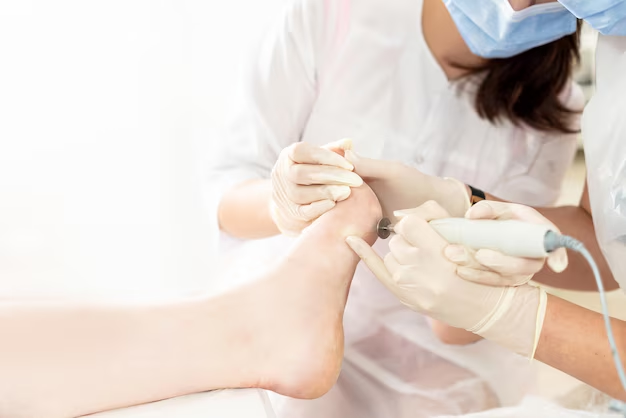Will Medicare Cover Your Visit to the Podiatrist?
When it comes to health care coverage in the United States, understanding what services are included under plans like Medicare can be a challenge. One common query is whether Medicare pays for visits to a podiatrist. If foot problems have you considering a trip to the specialist, let's dive into what Medicare covers and how you can manage potential costs.
Understanding Medicare's Coverage for Podiatry
Medicare Part B generally covers medically necessary podiatry services. This includes treatment for foot injuries and diseases, such as bunions or heel spurs. If your visit to the podiatrist is deemed medically necessary by a healthcare provider, Medicare will often cover 80% of the approved amount, leaving you responsible for the remaining 20% after your deductible is met.
However, routine foot care, like the cutting or removal of corns and calluses, toe nail trimming, and other hygienic foot care services are not covered by Medicare. The exceptions are if you have specific conditions, like diabetes or a circulatory disease, where such routine care is considered essential to maintain overall health.
Navigating Costs and Coverage Options
Although Medicare provides a base level of coverage, out-of-pocket costs can quickly accumulate, especially if you require frequent visits or treatments. Here are a few strategies to help manage these expenses:
Medigap Plans: These supplemental insurance plans can cover some or all of the remaining costs not paid by Medicare Part B, potentially reducing your financial burden.
Medicare Advantage Plans: Some Medicare Advantage plans might offer additional coverage for podiatric services at a lower out-of-pocket cost. Be sure to compare plans and understand their podiatry coverage specifics.
Medicaid: If you qualify for both Medicare and Medicaid, you might receive additional coverage that helps pay for routine foot care. Eligibility and coverage details can vary from state to state.
Financial Assistance Programs: Some local and national programs offer financial aid to individuals who cannot afford necessary medical treatments. Check with nonprofit organizations that focus on health care or senior services.
Exploring Further Financial and Educational Resources
Understanding your Medicare benefits and managing extra costs are essential steps in keeping your healthcare affordable. Beyond specific podiatry coverage, there are numerous financial assistance and educational opportunities that can ease your financial burdens:
Government Aid Programs: Various federal and state programs offer help, such as food assistance, housing support, and medical expense relief. Eligibility requirements and benefits will vary, so do a thorough check.
Debt Relief Options: If medical expenses have left you in debt, look for debt management or consolidation programs that can help negotiate and lower your payments.
Credit Card Solutions: For those using credit cards to manage medical costs, consider balance transfers or low-interest rate cards to help minimize interest payments.
Educational Grants: For individuals pursuing education, look for scholarships and grants that can alleviate tuition costs, freeing up more of your budget for healthcare.
Your journey to better foot health shouldn’t be a financial burden. By understanding Medicare’s podiatry coverage and exploring the assistance options available, you can ensure you receive necessary care without overwhelming costs.
Financial and Educational Assistance Highlights
- 💸 Medigap Plans: Supplemental insurance to cover out-of-pocket Medicare costs.
- 🏥 Medicare Advantage Plans: May offer additional podiatry coverage.
- 🌟 Medicaid: Possible additional coverage for eligible individuals.
- 🍏 Government Aid: Assistance programs for food, housing, and medical expenses.
- 🏦 Debt Relief Options: Programs to lower or consolidate debt.
- 💳 Credit Solutions: Low-interest or balance transfer credit card options.
- 🎓 Educational Grants: Scholarships and grants to reduce tuition burdens.

Related Topics
- a Medical Provider That Accepts Medicare Assignment Must
- a Medical Provider That Accepts Medicare Assignment Must Quizlet
- a Medicare Patient Received Treatment That Isn't Covered By Medicare
- a Medicare Patient Receives Treatment That Isn't Covered By Medicare
- a Medicare Supplement Basic Benefit Is Quizlet
- a Medicare Supplement Companies
- a Medicare Supplement Policy Is Quizlet
- a Medicare Supplement Policy Must Not Contain Benefits Which
- a Patient Received Treatment In August Medicare
- Am I Eligible For Medicare